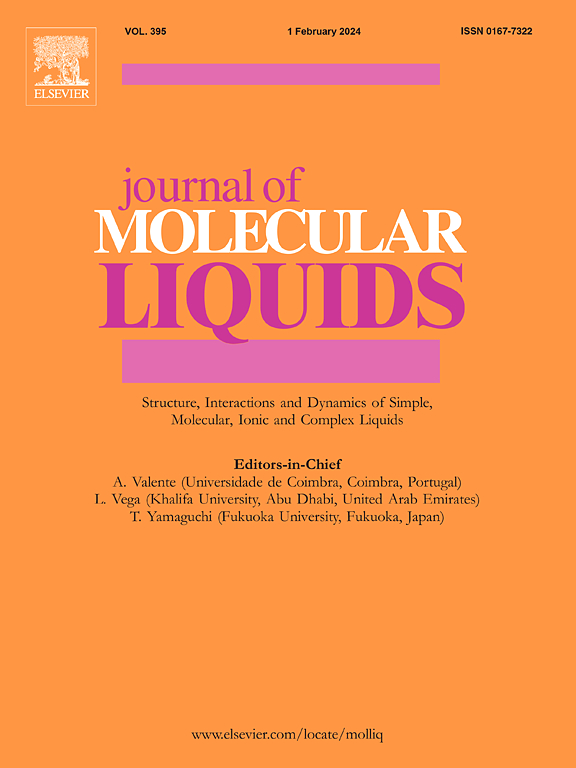Thermodynamic Assessment for Rivaroxaban Nanoparticle Production Using Gas Anti-solvent (GAS) Process: Synthesis and Characterization
IF 5.3
2区 化学
Q2 CHEMISTRY, PHYSICAL
引用次数: 0
Abstract
Nanoparticles of Rivaroxaban were successfully created using the supercritical gas antisolvent method. The study focused on the effects of pressure, temperature, and initial solute concentration on the size and shape of the nanoparticles, utilizing the Box-Behnken design approach. The optimal conditions were determined to be an initial Rivaroxaban concentration of 25 mg/ml, a pressure of 160 bar and a temperature of 318 K. These parameters resulted in nanoparticles of 340.1 ± 10.7 nm, significantly smaller than the original sample (45 μm). Different analytical methods, including XRD, DLS, DSC, FTIR and FESEM were used to study the Rivaroxaban nanoparticles. The findings indicated that the nanoparticles produced through the GAS antisolvent method had lower crystallinity. The FESEM and DLS data confirmed the nanometer size and narrow distribution of the Rivaroxaban particles obtained through this method.

求助全文
约1分钟内获得全文
求助全文
来源期刊

Journal of Molecular Liquids
化学-物理:原子、分子和化学物理
CiteScore
10.30
自引率
16.70%
发文量
2597
审稿时长
78 days
期刊介绍:
The journal includes papers in the following areas:
– Simple organic liquids and mixtures
– Ionic liquids
– Surfactant solutions (including micelles and vesicles) and liquid interfaces
– Colloidal solutions and nanoparticles
– Thermotropic and lyotropic liquid crystals
– Ferrofluids
– Water, aqueous solutions and other hydrogen-bonded liquids
– Lubricants, polymer solutions and melts
– Molten metals and salts
– Phase transitions and critical phenomena in liquids and confined fluids
– Self assembly in complex liquids.– Biomolecules in solution
The emphasis is on the molecular (or microscopic) understanding of particular liquids or liquid systems, especially concerning structure, dynamics and intermolecular forces. The experimental techniques used may include:
– Conventional spectroscopy (mid-IR and far-IR, Raman, NMR, etc.)
– Non-linear optics and time resolved spectroscopy (psec, fsec, asec, ISRS, etc.)
– Light scattering (Rayleigh, Brillouin, PCS, etc.)
– Dielectric relaxation
– X-ray and neutron scattering and diffraction.
Experimental studies, computer simulations (MD or MC) and analytical theory will be considered for publication; papers just reporting experimental results that do not contribute to the understanding of the fundamentals of molecular and ionic liquids will not be accepted. Only papers of a non-routine nature and advancing the field will be considered for publication.
 求助内容:
求助内容: 应助结果提醒方式:
应助结果提醒方式:


